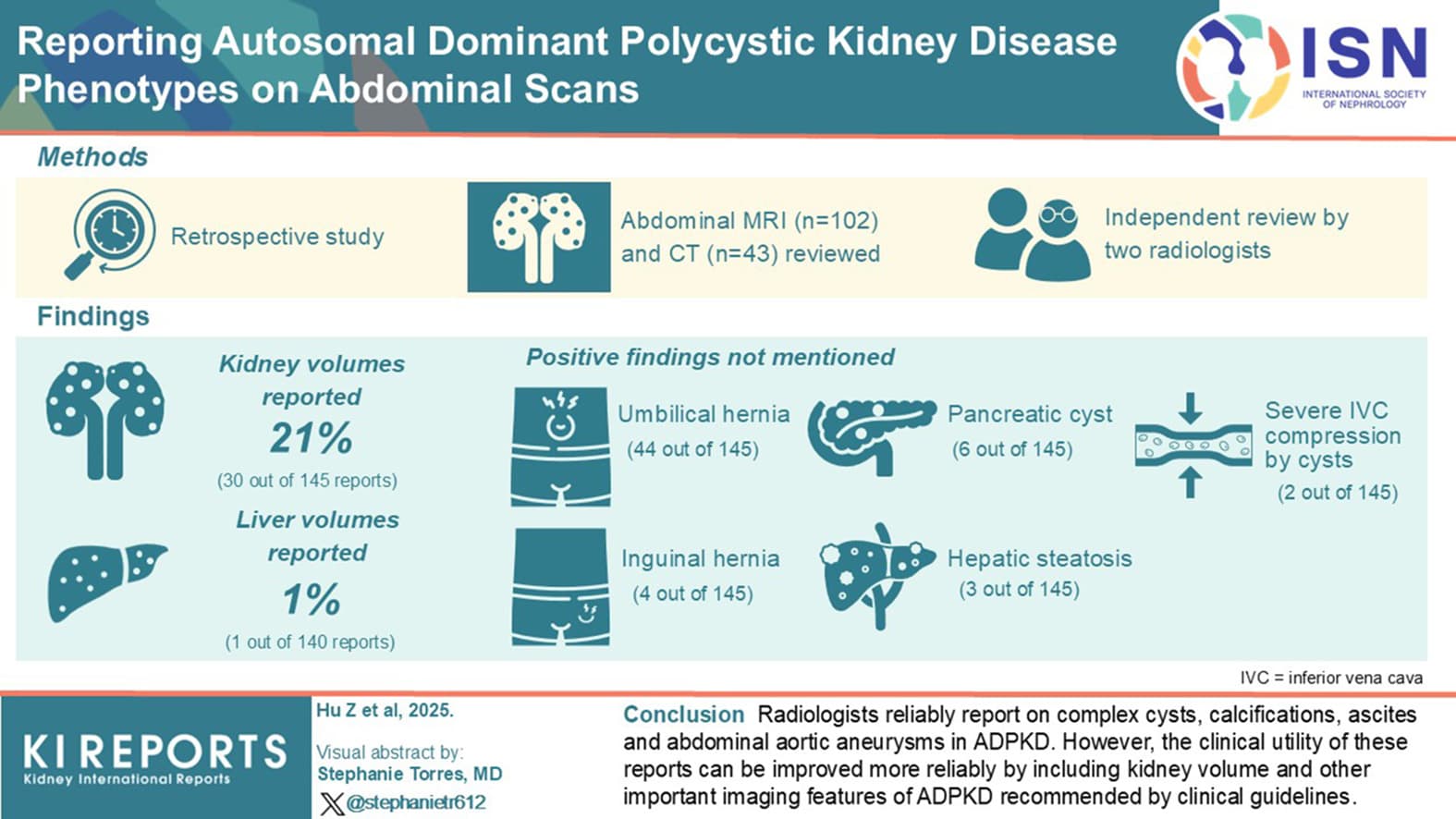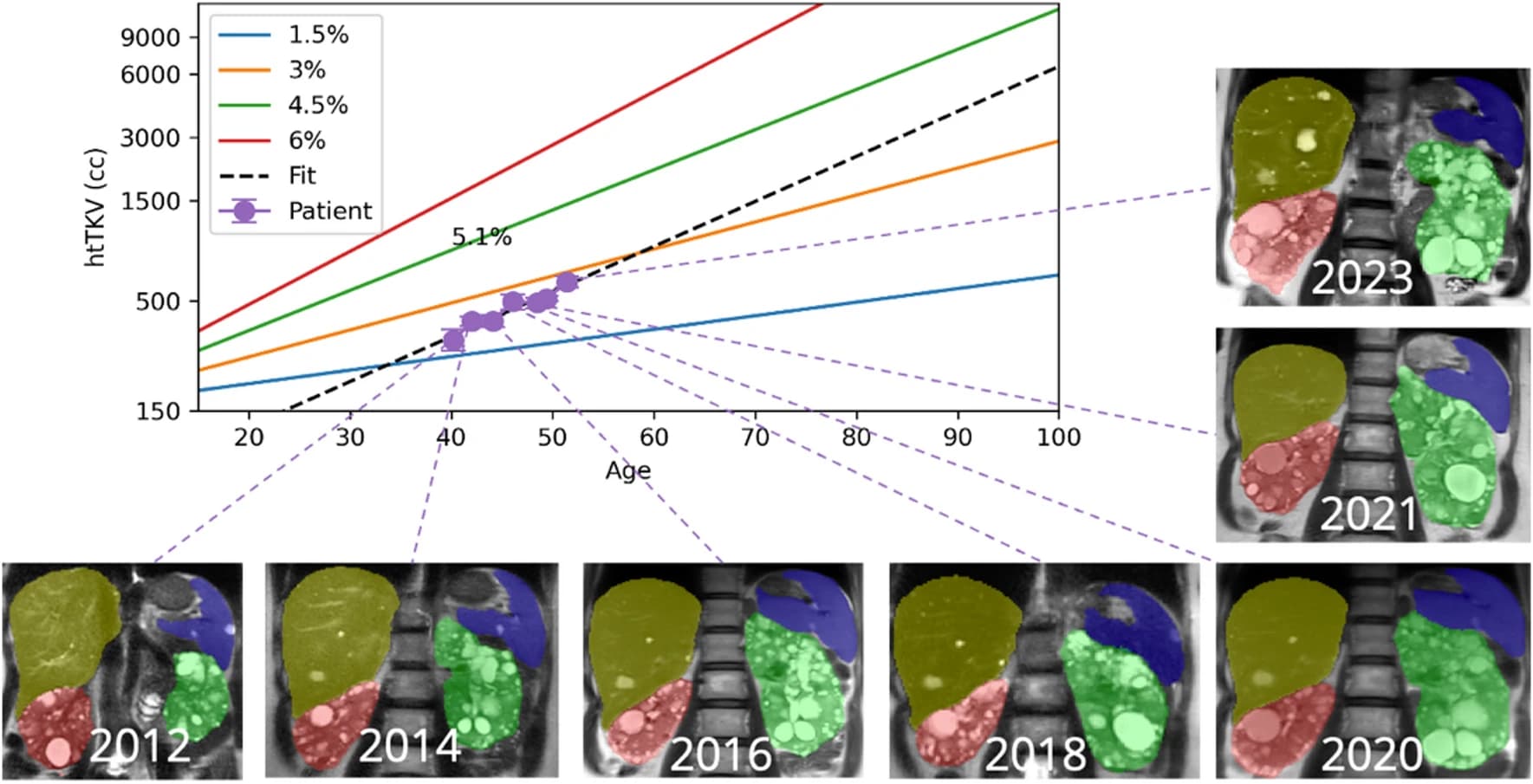Projects
Interactive Tools
Peer-reviewed Publications
By tracking 299 individual cysts from 37 subjects on repeated MRI scans over 8 or more years, we propose a transition theory for ADPKD kidney cyst growth: Simple cysts follow logistic growth and can transition to complex hemorrhagic cysts and sometimes rupturing shrinking and disappearing. These transitions are associated with faster decline of kidney function. Large, rapidly growing simple cysts are also associated with faster loss of kidney function. Tracking individual cysts may help track the ADPKD disease course.

This study reviewed 145 external radiology reports of ADPKD abdominal MR/CT scans. As of 2025, only 21% included total kidney volume, a key metric for clinical management. Reporting could be strengthened by consistently including kidney volume and other guideline-recommended imaging features.

In ADPKD patients with 3+ scans, 2-parameter least squares fitting predicted kidney growth rate better than Mayo Imaging Classification.
